Abstract
Note: This lesson is designed to be learned following the “anchor” lesson of the Pioneering unit, A Pioneer Is Born.
In this lesson, learners will take a look “behind the curtain” of the Chalutzim movement. The pioneers arrived with minimal possessions and were overwhelmingly poor; how did they have the funds to create agricultural settlements? Although the Zionist movement had a financial base within the Jewish European world, the Jewish population in the Land of Israel was actively supported by several Jewish philanthropists from the diaspora. (See the historical background in the expanding your horizons section below.) Should these philanthropists be considered pioneers? Could they have done more to help the pioneers succeed? This resource features interactive photos and brief videos through which students will explore the contributions of Baron deRothschild and Natan Strauss and discuss their historical legacy.
The learners will:
-
understand the various roles and responsibilities that need to coexist in order to build a country
-
know the role that the philanthropists played in the pioneering movement
be able to articulate an educated opinion as to whether it is correct to view the philanthropist as a pioneer
Note: All of the links in the lesson plan below can be viewed as a whole class activity or individually, on the learning platform.
Step 1: Show the students an interactive photo, reminding them of the main characteristics of the ideal pioneer at the time of the First Aliyot.
-
Ask the students to answer the survey question: Does the image of the pioneer shown in the photo correspond with their perception of a pioneer today?
-
Ask them to describe their perception of a pioneer and to give examples of specific people. You can also ask them to post their ideas on the class board.
Step 2: Connecting the dots – From the pioneers to the philanthropists
-
Show the interactive photo again, but this time it will include questions rather than statements. The questions relate to the funding of the Zionist pioneer movement.
-
Watch the video shot in 1913 showing several of the First Aliyah’s colonies and ask the students to create a list of items and elements that needed to be funded in order to establish and run the colonies (land, seedlings, construction of buildings, salaries for workers, and more).
Students can write down the list in the learning environment or in their notebooks.
-
Ask the students if they think the funders of the new settlements should be considered pioneers and why.
Step 3: The activities of the philanthropist Baron de Rothschild
-
Watch the video again (from 00:46 to 01:14) and ask the students to answer the questions.
-
Students should read about the Baron’s “Administration System” and the complex realities it helped create in the colonies.
-
Ask the students which language they think was used by the baron’s clerks when speaking with the settlers (French), and instruct them to create a transcript of the clerk’s conversation with the setters. Volunteers can read their texts out loud while screening the video.
-
Discuss: In their opinion, could the baron have supported the settlers more successfully? Why or why not?
Step 4: The activities of the philanthropist Nathan Straus
-
Watch the following film showing the activities of the American philanthropist Nathan Straus and instruct the students to answer the questions.
-
Ask the students to use the map on the archive’s site to locate the earliest film shot in Netanya.
-
Ask: When was the film shot? (1929)
-
Whose image appears at the beginning of the film? (Nathan Straus).
Step 5: Closing discussion
Which form of pioneering do you think holds more importance to the development of the Zionist project—that of the early settlers or that of the philanthropists?
Computer, projector, personal computers for each student (optional)




.jpg)
